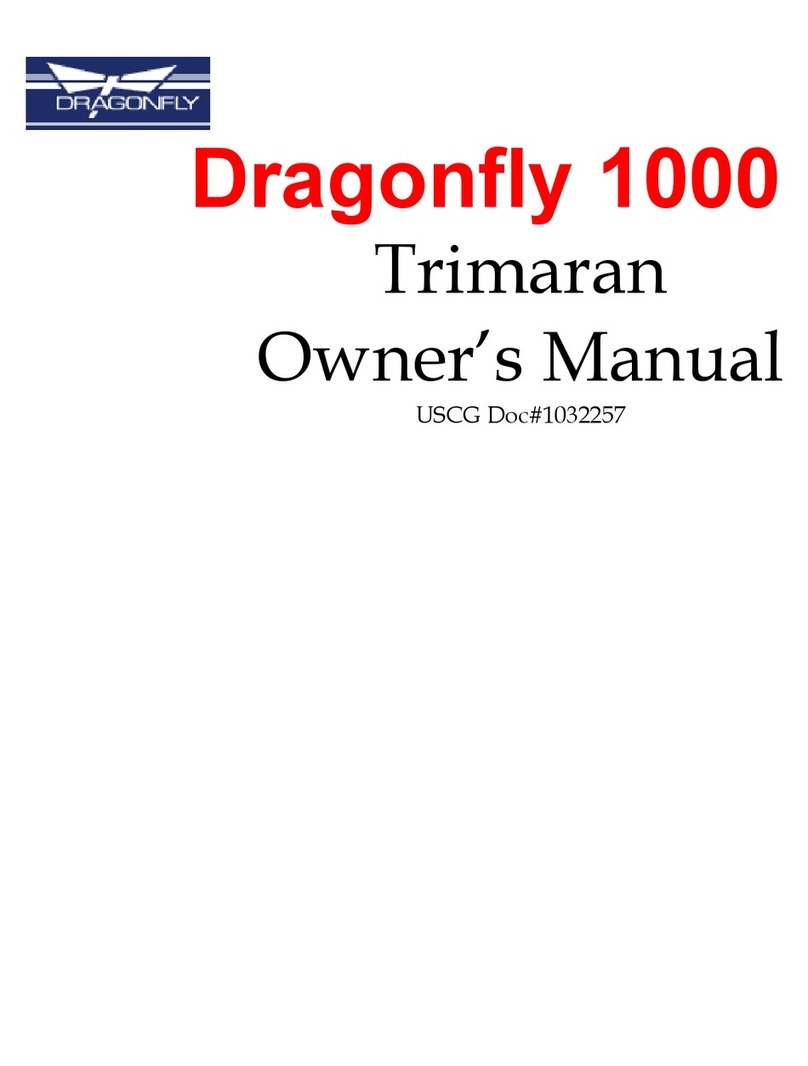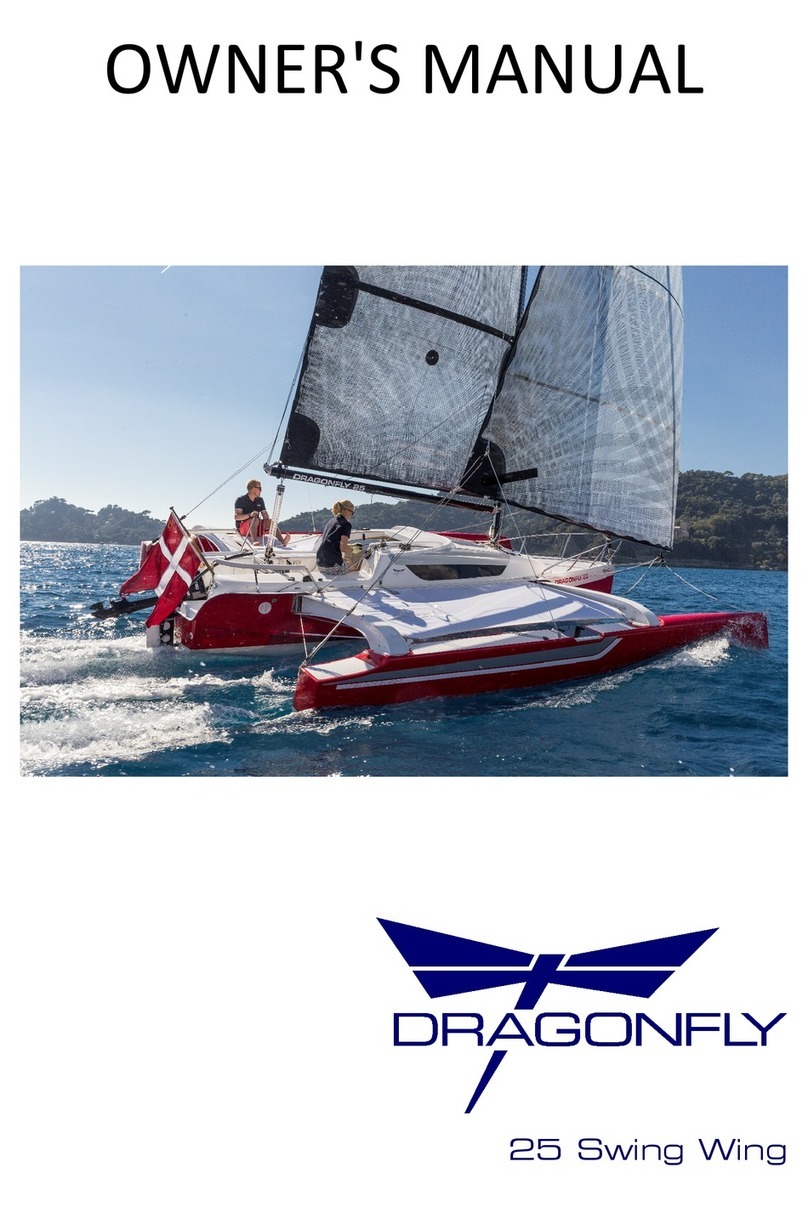Introduction
We are delighted to welcome you to the family of DRAGONFLY sailors with our warmest
congratulations on your new DRAGONFLY.
This manual is meant to help you enjoy sailing and understand the comfort and safety of
your boat. The manual describes the boat, the equipment and includes maintenance
guidance. Before you and your crew take off to sea, we strongly recommend reading the
manual carefully to avoid any mistakes and/or damages. Make yourself at home on board
your boat before going sailing.
We keep improving our boats as we want you to benefit from new technology and
breakthroughs, new equipment, materials and, of course, our experience. Therefore, the
characteristics and information hereby provided are not binding and can be changed without
prior notice or updated obligation.
DRAGONFLY is built with more than 40 years of experience in multihulls, and we feel today
that we are delivering a consistent product of high quality and design. Quorning Boats
endeavours to deliver a perfect product. If minor problems should occur, we kindly ask you
to contact your dealer.
Please keep your DRAGONFLY in respectable condition as well at sea, in the Marina as
ashore.
We wish you, your family and crew all the best and lots of fun with your DRAGONFLY,
QUORNING BOATS
Jens Quorning
Owner's Manual –April 2017 Edition































